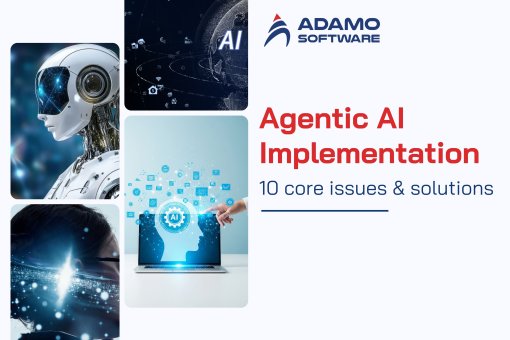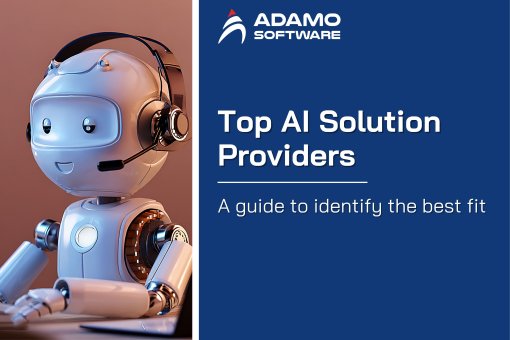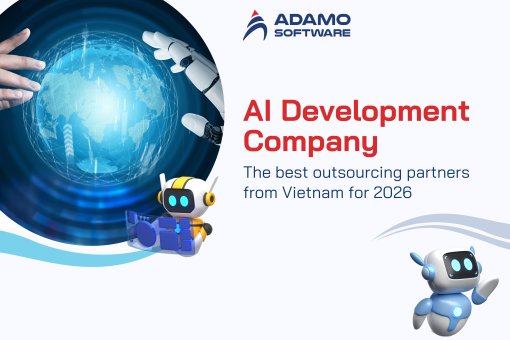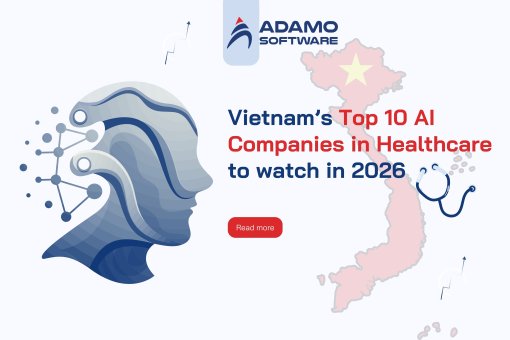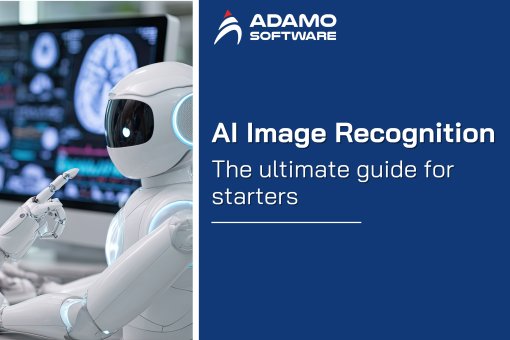AI in Digital Health: Cost breakdown, comparisons, and savings tips
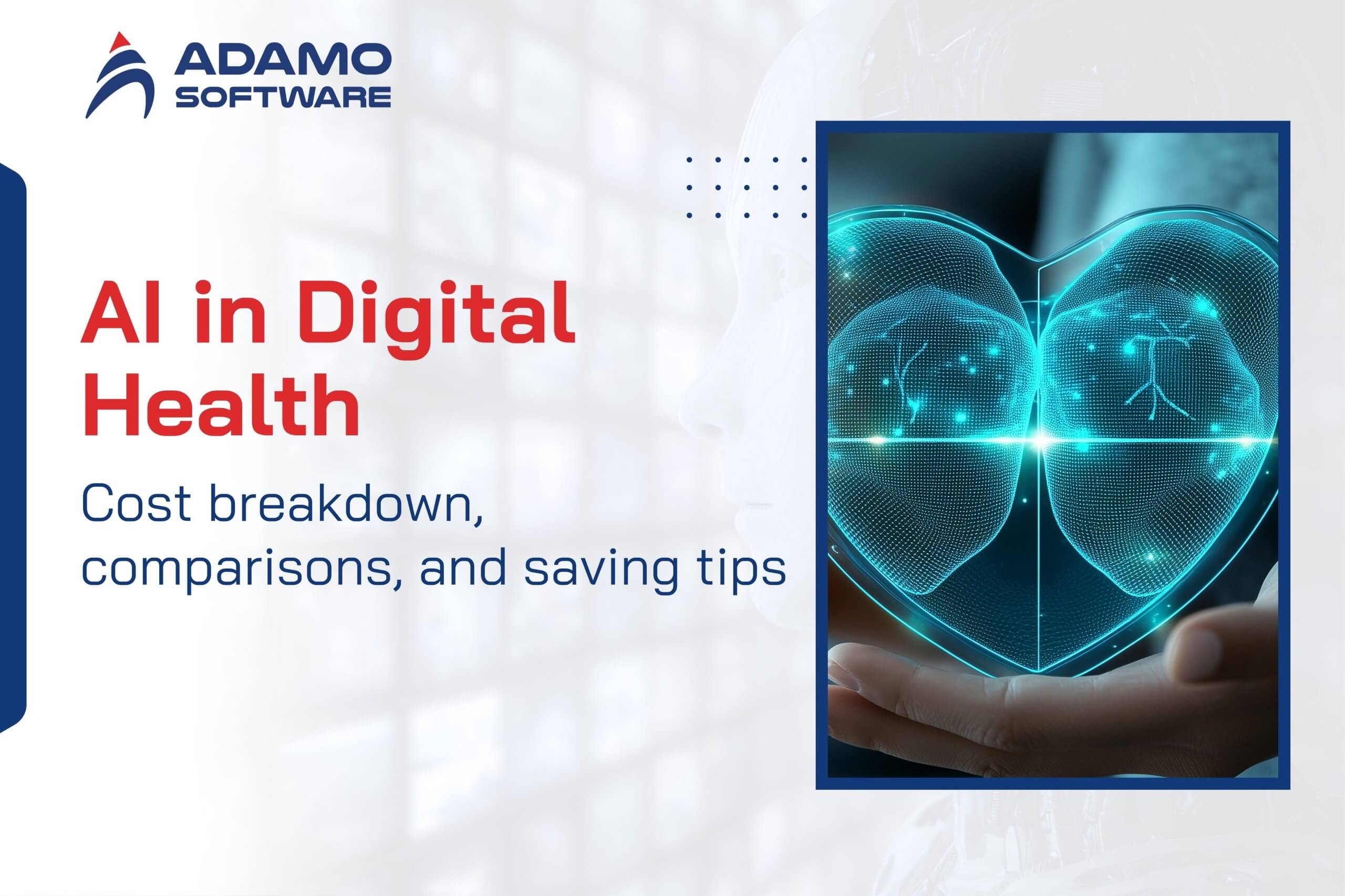
The adoption of AI in digital health is on the rise due to the needs for healthcare quality enhancement. Let’s learn about this technology’s cost!
In today’s digital world, Artificial Intelligence (AI) has been adopted in many industries. So does the healthcare sector. AI in digital health refers to the use of advanced technology to support and enhance how medical professionals work. These systems can analyze large patient datasets, help with diagnoses, automate tasks, assist in robotic surgeries, and communicate with patients using chatbots. Let Adamo Software discuss detailed information about AI in healthcare.
Through this blog post, you will find out these following pieces of information.
- Market overview of AI in digital health (2025-2030)
- Cost comparison between AI-powered Healthcare vs Traditional Healthcare
- The main types of AI solutions in digital health and their cost
- What are the main factors that affect the cost of AI in digital health?
- How much does AI Healthcare Software Development cost?
- 3 effective strategies for cost optimization
All of the information has been thoroughly researched and updated to the latest trends. So, let’s read our post and find some useful information!
I. Market overview of AI in digital health (2025-2030)
The AI in the digital health market is growing every day, driven by the need to improve treatment efficiency, personalize care and apply high technology. According to Grand View Research, the global AI in healthcare market was valued at USD 26.57 billion in 2024 and is expected to surge to USD 187.69 billion by 2030, reflecting a CAGR of 38.62% between 2025 and 2030.
Marketsandmarkets reported the same CAGR growth, with the AI in digital health market valued at USD 14.92 billion in 2024, grew to USD 21.66 billion in 2025, and is projected to reach an estimated USD 110.61 billion by the end of the forecast period. These numbers show that the AI in the digital health market is rising, with impressive growth rates and potential for expansion globally. This growth comes from the increasing demand for accurate diagnosis, optimized treatment processes and support for doctors in making faster clinical decisions. Besides, the trend of personalized healthcare and the popularity of smart wearables and remote monitoring platforms also contribute to this rise.
II. Cost comparison between AI-powered Healthcare vs Traditional Healthcare
Comparing AI in digital health costs and traditional medicine costs shows clear differences in many aspects. They include diagnostic speed, cost savings, patient results, productivity boost, and error elimination. The table below shows more detailed information about each aspect.
| Aspect | AI in digital health | Traditional healthcare |
| Diagnostic speed |
|
|
| Cost savings |
|
|
| Patient results |
|
|
| Productivity boost |
|
|
| Error elimination |
|
|
In general, adopting AI in digital health brings many advantages compared to traditional healthcare. AI helps to comprehensively optimize medical processes, while traditional methods are still limited by manual work and high costs.
III. The main types of AI solutions in digital health and their cost
The cost of implementing AI in the healthcare sector is highly variable, depending on factors such as the complexity of the solution, its specific functionalities, and the data requirements. Let Adamo Software list the main types of AI in digital health and their costs, as in the table below.
| AI solution | Use case in healthcare | Estimated costs | Development time |
| Machine Learning and Predictive Analytics |
|
$100,000 to $200,000 | 3 to 9+ |
| Natural Language Processing (NLP) and Conversational AI |
|
$250,000 to $500,000+ | 3 to 12+ months |
| Computer Vision |
|
$180,000 to $400,000+ | 6 to 12 months |
| Neural networks |
|
$200,000 to $300,000 | 6 to 9 months |
| Generative AI and Drug Discovery |
|
$350,000 to $10,000,000+ | 6 to 12 months |
| AI-powered robotic process automation (RPA) |
|
$100,000 to $250,000 | 3 – 6 months
|
IV. What are the main factors that affect the cost of AI in digital health?
There are many factors affecting the cost of AI in digital health. Let’s explore some main ones with Adamo Software! Here are some aspects to note:
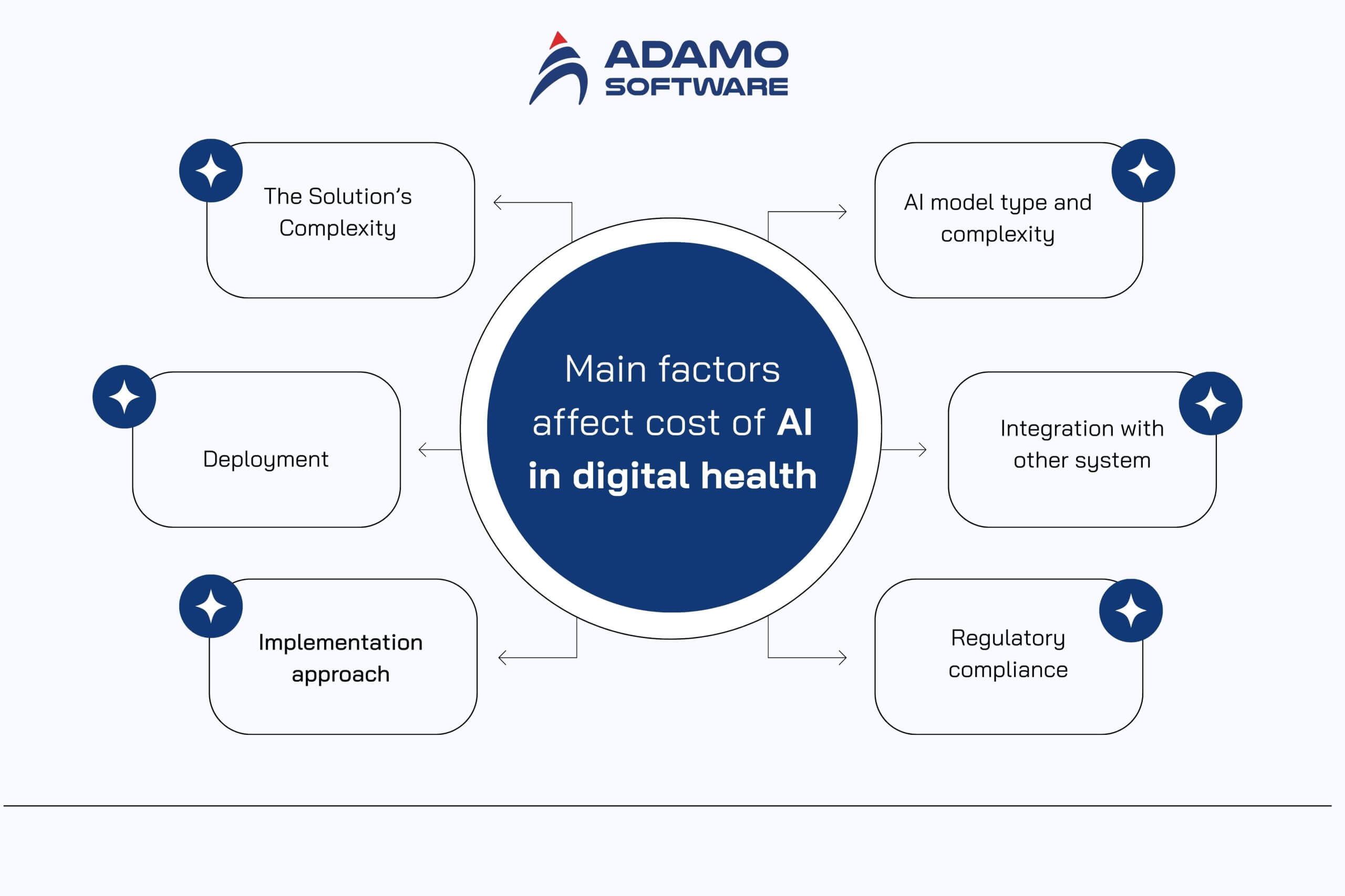
- The Solution’s Complexity – The more complex the higher costs
- AI Model Type and Complexity – Simple, deep learning models or generative AI Models
- Deployment – On-premises, cloud, and edge AI
- Integration with other systems
- Implementation Approach – Off-the-shelf models, customized models, and fully custom models
- Regulatory Compliance – Security measures, audits, and certifications and approvals
Let’s explore each factor in detail!
1. The Solution’s Complexity
The solution’s complexity is one of the outstanding determinants that affects the cost of AI in digital health. The more complex the solution is, the higher the costs. Deploying AI solutions requires specialized professionals such as data scientists, machine learning engineers, and MLOps experts, in addition to developers and project managers.
Because these professionals are in high demand, they are often expensive to hire.
The timelines for AI projects are not always predictable, which differs from traditional software development. The process of fine-tuning complex models to achieve reliable accuracy can take weeks or months, which contributes to the overall budget. This also means that healthcare organizations need to prepare solid financial and human resources before deploying AI. Therefore, careful consideration of benefits and costs is necessary to ensure the feasibility and long-term effectiveness of adopting AI in digital health.
2. AI Model Type and Complexity
AI model type and complexity is also an important element that decides the costs of implementing AI in digital health. More complex models require more data, computational resources, and training time, significantly increasing the deployment budget. Here are the costs and requirements following the model type.
- Simple models
The cost for simpler AI models falls on the lower end, with an estimated range of $35,000–$45,000. They require smaller datasets, less computing power, and minimal training, all of which contribute to lower development costs.
- Deep learning models
Compared to the simple models, the costs for deep learning models of AI in digital health are higher. For more advanced deep learning systems, a typical cost is between $60,000 and $100,000. These models are more resource-intensive and expensive to develop because they require larger datasets, longer training times, and specialized expertise.
- Generative AI models
Generative AI models are the most expensive, typically ranging more than $200,000. They require powerful infrastructure and highly specialized skills, which are major factors in increasing both development and maintenance costs.
3. Deployment
AI in digital health deployments can be done in a variety of ways, including on-premises, in the cloud, or at the edge (edge AI). Each deployment method has its own advantages and limitations, directly affecting the cost, flexibility, and scalability of the system.
For on-premises solutions, the upfront cost for hardware purchase and maintenance can range from around $5,000 for a small model to as much as $50,000 for deep learning. In terms of cloud solutions, costs start low (around $430–$650 per month for basic models) but increase with scale, potentially reaching $5,000–$15,000 or more per month for a complex Generative Adversarial Network (GAN). Edge AI solutions combine local processing with cloud storage. They require a higher initial setup cost but reduce delays and lower the risk of data breaches during transmission.
4. Integration with other systems
Integrating AI with existing systems such as EHR/EMR, middleware, API, user interface or legacy systems is an important but challenging step. This process not only incurs additional costs but also requires time and effort to ensure compatibility and stable operation.
Requiring engineers to ensure a seamless and secure flow of data, the integration of AI in digital health with Electronic Health Record (EHR) and Electronic Medical Record (EMR) systems costs approximately $7,800–$10,400. Building middleware and APIs to connect with various devices can cost $10,000 or more, as it often requires custom coding. User interface changes can cost $10,000 or more, reflecting the significant design and development work needed to make AI outputs easy for staff to use. Legacy systems often require an analysis budget of $25,000 to $35,000 alone, as their older architecture is more challenging to understand and adapt.
5. Implementation Approach
Implementation approach is also one of the notable factors that have a strong influence on the adoption of AI in digital health. Businesses can choose to use pre-built models, custom models, or build completely from scratch, each with different levels of flexibility, cost, and development time.
Off-the-shelf models are more affordable, with integration costs typically ranging from $10,000 to $50,000, plus licensing fees. While the initial cost is lower because the core model already exists, the recurring fees can add up over time. Whereas, starting at $50,000, customized models are more expensive as the cost covers both integration and specific customization to fit your needs. The most expensive option is the fully custom models, which has the cost starting at $100,000 and can easily exceed $500,000. While the upfront investment is significant because they are built from scratch, they offer the long-term benefit of having no unnecessary features or recurring licensing fees.
6. Regulatory Compliance
Regulatory compliance is a must when implementing AI in digital health, ensuring data security and patient privacy. This requires systems to adopt strict security measures, undergo regular audits, and obtain the necessary certifications and approvals.
Ensuring robust security measures like encryption, secure logins, and proper data handling protocols all add to the engineering hours and overall project time. Hiring compliance experts to perform audits ensures that the AI systems adhere to regulations like HIPAA. Depending on an organization’s size and readiness, gaining certifications and approvals such as HIPAA compliance can range from $10,000 to $150,000.
V. How much does AI Healthcare Software Development cost?
The cost of developing AI in digital health depends largely on the scale and complexity of the solution. From minimum viable products (MVPs) to moderately complex systems or comprehensive enterprise solutions, each level will require different levels of investment and resources. Let’s see how much each system costs.
1. Minimum Viable Products (MVPs)
An MVP, or Minimum Viable Product, is an early-stage solution designed to test a single idea or feature. They can usually cost between $20,000 and $100,000. At this stage, the goal isn’t to build a complete system, but rather to validate the concept and see if it works before investing more. Deploying an MVP helps businesses minimize risks, save on initial costs, and quickly gather feedback from users. It is also helpful in determining whether to expand to a more comprehensive medical AI solution.
2. Moderately Complex Solutions
When AI in digital health tools are built to support specific departments, like predictive models or clinical chatbot, they require additional functions, integration, and training. The cost for these projects typically falls between $80,000 and $350,000, with the final price depending on the degree of necessary customization and connectivity to existing systems. These projects also often take longer to implement, due to the need to ensure compatibility and stable operation in real-world medical environments.
3. Highly Complex, Enterprise-Wide Systems
Costs rise significantly for hospital-wide or population-level solutions, which often include advanced diagnostic AI, large-scale analytics, or fully integrated clinical decision systems. With requirements for custom algorithms, strict compliance, and seamless integration across multiple systems, costs for these solutions typically start at $300,000 and can exceed $1 million, particularly for cutting-edge or large-scale innovations.
VI. 3 effective strategies for cost optimization
To optimize costs when developing AI in digital health, organizations need to have a clear strategy instead of spreading investments. Three effective approaches include prioritizing and deploying in stages, leveraging available solutions combined with hybrid models, and outsourcing in AI development and management. Let’s learn about each strategy with Adamo Software!
1. Prioritizing and Phase Implementation
Instead of building a complete AI solution all at once, companies should prioritize and adopt a phased approach. Starting with a Minimum Viable Product (MVP) significantly reduces initial costs and provides the time and perspective needed to evaluate and refine the solution. For this reason, more businesses are now concentrating on developing critical functionalities first, then expanding their systems over time to meet new demands and integrate emerging technologies.
2. Leveraging available solutions combined with hybrid models
Leveraging available solutions combined with hybrid models is also among the cost-effective strategies when adopting AI in digital health. While existing AI solutions may not perfectly fit a healthcare provider’s needs, they can be used as a strong foundation for building custom, hybrid models. This approach allows organizations to leverage proven technology while tailoring it to their specific requirements.
Instead of developing a new tool from scratch, businesses can save time and money by leveraging and later adapting the suitable features of an existing product. Businesses can also use open-source AI frameworks and pre-trained models, which are a great way to save time and money while building a solution.
Ready to Outsource?
Get top-tier IT talent without the hassle. Contact us now!
3. Outsourcing in AI development and management
One of the effective strategies to optimize costs in the field of AI in digital health is to outsource AI development and management. This solution helps businesses reduce human resources and technology infrastructure costs. Besides, it can take advantage of the expertise of experienced partners. As a result, organizations can focus resources on core activities, while ensuring AI deployment in digital health is fast, flexible and sustainable.
VII. Final thoughts

In conclusion, the AI in digital health market is on the rise due to the needs for convenience in healthcare. This robust growth shows the potential for widespread application in diagnosis, personalized care and medical data management. However, to maximize the benefits, organizations need to pay attention to security issues, system integration capabilities and human resources. Given these factors, outsourcing AI development can be a strategic move that helps optimize costs and speed up the pace of innovation in healthcare.
If you are looking for a partner to help you with the implementation of AI in digital health, Adamo Software, as one of Vietnam’s leading technology companies, can be your ideal choice. Here’s how Adamo Software can help.
- Consulting and designing medical AI in digital health solutions: Analyzing needs, determining suitable AI application scenarios for hospitals, clinics and digital health platforms.
- Developing customized AI models: Building machine learning algorithms for image diagnosis, analyzing patient data and predicting health risks.
- Integrating AI in digital health into existing systems: Connecting with EMR/EHR, patient portal, telemedicine and remote healthcare applications.
- Ensuring data security and regulatory compliance: Building solutions that meet HIPAA, GDPR and international medical privacy regulations.
- Outsourcing services: Providing a team of experienced AI engineers and experts to optimize development costs and shorten product launch time.
Still hesitating whether to choose Adamo Software? Let’s contact us for more detailed information!







